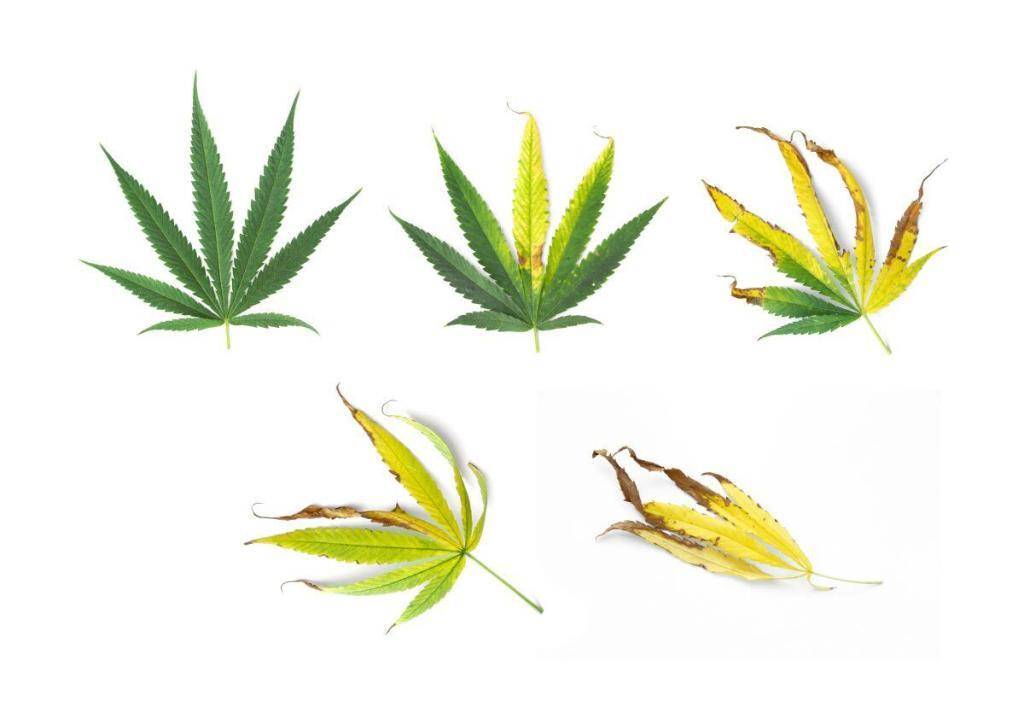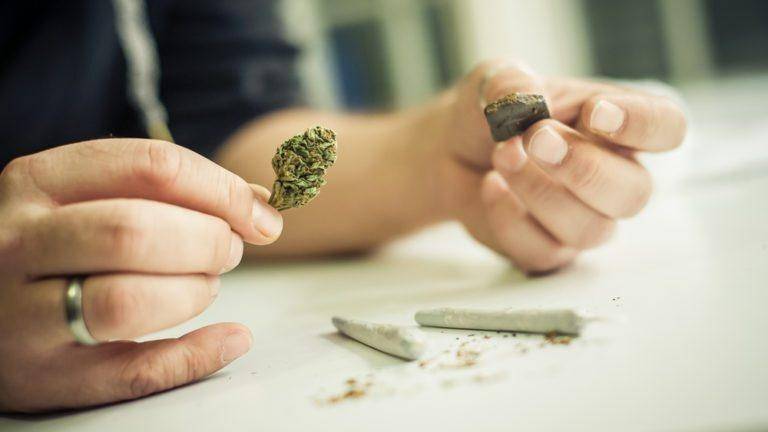Ever since the legalization of the use of marijuana for medical use in 35 U.S states, the cannabis business has grown to be very profitable. Taking care of cannabis plants is a venture that employs more than three hundred thousand people across the US. Legal marijuana business generates an upward of $13 billion in revenue annually.
Clearly, the cannabis business has a lot of potential, especially as the push to legalize it for both medical and recreational use across the whole country is on the rise.
However, just like any other farming ventures, growing cannabis has its challenges. One common condition that affects cannabis plants is nutrient burn. So whether you are a new farmer, or an experienced hand still struggling with the issue, read on to find some tips on how to handle a nutrient burn.
What is a nutrient burn?
Cannabis nutrient burn, or a ‘nute burn’ as is commonly called, is the yellowing or browning of the tips of the leaves of the plant. The discoloration is caused by a concentration of nutrients at the roots of the plant, normally because of excessive use of fertilizer.
Since the roots are the point through which water gets into the plant, this concentration of nutrients disrupts the flow of water into the plant. Not enough water gets to the leaves and the tips town brown or yellow.
Causes of a nutrient burn
Put simply, a nute burn is caused by excessive nutrients. While planting your seeds directly into nutrient-rich soil like compost might seem like a good idea, the plant can get overwhelmed quickly and a nute burn can happen.
Another cause of a nute burn is excessive watering. The plant needs some time to use up the water store in the roots. Overwatering overwhelms the absorption rate of the roots and your plant becomes sick. Sometimes plant pests or illnesses can cause a nute burn.
More often than not, however, inorganic fertilizers are the main cause of a nute burn. Fertilizer is commonly used in cannabis farming because its nutrients are easily absorbed by the plant. This way, the plant can focus more on growth rather than looking for the right nutrients from the soil.
You might think, then, the more the fertilizer the faster the plant grows, right? Many new farmers fall into this kind of thing, but it is wrong. When a person is overfed, they might vomit to get rid of the excess.
Plants do not have the same mechanism, so instead the sickness displays itself in other ways like yellowing of the leaves.
The flower needs different nutrients during different stages of growth. Putting excessive nutrients at any stage of growth will hurt the plant. This includes excessive growth stimulants at the early stages of plant growth, or bloom boosters when the plant is close to flowering.

How harmful is a nutrient burn?
Unfortunately, even some experienced farmers think a bit of nute burn is a good thing because it means your plant is getting a lot of nutrients. However, overfeeding your plant will not result in a larger harvest. Any nutrient you give your plant beyond the recommended level only serves to choke it.
The leaves of your plant are the site where one of the most important plant processes happen: photosynthesis. This process is aided by light, carbon dioxide, and water. Green leaves also have chlorophyll that aids this process. The plant to create energy for growth uses the food that results from photosynthesis.
A nute burn turns the leaves yellowish, reducing the amount of chlorophyll and thus affecting the amount of food the plant produces. If no intervention is taken, whole leaves can be discolored, and the plant will not be able to create enough food for its sustenance. You will get very low yields with leaves that have a chemical-like taste, or in very bad cases, no yields at all.
Markers of a nutrient burn
A nute burn is characterized by discoloration at the tip of the cannabis leaf. However, you should take note as the plant goes through several stages of growth of other symptoms. Remember, the earlier you fix the issue, the less likely you are to suffer from loss.
Since nitrogen is the main nutrient found in cannabis, excessive amounts can cause nitrogen toxicity. When this happens, the leaves of your plant may turn a deep green shade.
You might think this is an indicator of plant health but it is not. Another sign is the bending of the leaves at the tips caused by excessive nutrients. Tips can also turn a very light green color different from the rest of the leaf.
Another sign can be noted at the stalks and branches. Nitrogen toxicity can turn these parts deep red or purple. It is important to constantly monitor your plant so you can quickly notice any changes and fix them before the damage is excessive.
When leaf discoloration starts moving from the tips inwards, then it is time for you to take action so you don’t lose the whole plant. Warning signs of increasing nute burn include downward curling or twisting of the leaves when nitrogen is excessive. Browning of the serrations of the leaf away from the tip indicates a potassium deficiency.
A nute burn during the vegetative stage of cannabis growth is easy to stop. However, it gets harder to change things once the plant enters the flowering stage. During this stage, the plant concentrates most of its energy on growing the buds for the flowers.
Therefore, the plant stops using nitrogen like before and demands other nutrients like calcium and magnesium. If you keep feeding the plant the same nutrients you did during the vegetative state, you are likely to cause irreparable damage to the plant.
It is very easy to lose the whole plant to nute burn in this stage, so you should take extra care to notice the symptoms. Nute burn during the flowering stage causes the same discoloration on the leaves as in the vegetative state. It also discolors the leaves of the buds, turning them yellow.
You can identify the difference between a nute burn and other conditions because the bud remains engorged even as the leaf discolors, and then they quickly crisp up and die. A nute burn is very hard to reverse during the flowering stage, and impossible to remedy the closer the plant is to harvesting.
If a nute burn proceeds to harvest time, the weed is likely to have an unpleasant chemical taste that affects the quality of the yield.
Nute burn is very common when growing cannabis. If only the tips are affected, keep an eye on your plant to prevent further damage. The progression of nute burn can be gradual if you have not overwhelmed your plant for too long.
However, if you notice the early signs and do not change your plant feeding routine, overnight the nute burn can spread to the whole leaf and cause wilting. In such cases, it may be too late to do anything to save the plant.

Nute burn vs. other discoloration
Many things can cause plant discoloration. Therefore, when you see your weed discolor, do not conclude fast it is a nute burn. Light stress, for example, causes the leaves to turn up at the tips and the leaves to turn a light green or yellow color.
How can you tell the difference between nutrient burn and nutrient deficiency symptoms in cannabis?
You can distinguish it from a nute burn because nitrogen toxicity causes leaves to curl downwards rather than upwards. Furthermore, a nute burn often starts from the bottom leaves up as the excessive nutrients move from the roots to the leaves.
However, light stress affects the topmost leaves first since they are closer to the sun or source of light. A third way to distinguish light stress from a nute burn is how difficult the leaves are to pluck off. A nute burn causes wilting and the leaves may drop off on their own or fall off the plant with slight agitation. Leaves affected by light stress, however, are hard to pluck off.
A potassium deficiency is also another condition that can easily be confused with a nute burn. Potassium deficiency causes the edges of the leaf at the tips of the serrations to have a brown appearance that almost looks like burning or a bleached one that is almost white in appearance.
Right at the end of the burnt look toward the vein, the color of the leaf will be light green or yellow. Normally the leaf will remain green right around the vein. The good thing is, this condition can be easily solved.
A third common condition that can be confused with a nute burn is pH fluctuation. pH balance is necessary for the plant to uptake nutrients from the soil. Fluctuations, i.e. up and down variations of the pH, can stress the plant. The result is the appearance of brown spots on the leaves. The spots can appear in the middle of the leaf close to the vein that intensifies until the leaf is lost. You can correct pH fluctuation, but it is impossible to recover affected leaves.
How to prevent nute burn
You will not have to try and reverse damage from nute burn if you prevent it from happening in the first place. If you are just starting your cannabis farming journey, buy seeds from well-reviewed seed banks. Such seeds are less prone to getting illnesses from pests or environmental changes.
You should also familiarize yourself with the different stages of plant growth and the nutrients needed for each. Whether you are mixing the nutrients yourself or buying pre-mixed fertilizer, it is recommended that you use three-quarters of the amount recommended by the manufacturer. This gives you a lot of room for error so you can adjust as needed without risking an intense nutrient burn.
You must have the right tools at hand when growing cannabis. A measuring device with specific set capacities is necessary when measuring out ingredients for self-mixed fertilizer. Use a well-marked jug or can when watering your plant to prevent overwatering. A pH tester is necessary so you can maintain a good pH balance around your plant.

How to fix cannabis nutrient burn?
Nutrient burn is often always inevitable. The good thing is there are many solutions you can try to stop the progress and reduce the overall damage to your plants.
The first step is to prune off all the affected leaves. Trace any flowers back to the original branch and remove them from the bottom. This protects the rest of the leaves from being infected once the flowers and leaves start rotting.
The next thing you should do is flush out the excess nutrients before adding the adjusted mix. Use pH balanced water and irrigate it directly into the soil for a few days if you have planted directly into the soil. If you use growers, inject pH balanced water and allow it to run through the planters. Measure the runoff from the pots until they read a normal range.
If you plant using a hydroponic system, you can either dilute the water in the reservoir or switch it out completely and replace with pH balanced water. Leave the fresh water in the reservoir for 24 hours or more, and measure the electrical conductivity levels until the right balance of salts is reached.
Tonics are also great for bringing the plant back to a healthy space. Minerals and vitamins are needed to nurse the roots back to health. Feed your plant this tonic for a while before adding more nutrients.
If the plant has flowered and is close to harvesting, these steps can help you remedy the burn and get some yield. It will not be very good, but at least you will not lose everything.
What can you do if you get a nute burn in the vegetative state or well before harvesting?
The market offers several methods you can use to nurse the plant back to health. The methods depend on how you have planted your cannabis. Here are three main solutions:
Hand-mixed nutrients
Always use three-quarters of what you used before the nute burn to repair the damage. Keep adjusting the level as the plant moves from one growth stage to another. Remember that a longer maturity time will be needed since the plant was sick for a while, and account for this in your feeding schedule.
Soil-based planting
It is tempting to grow your plants directly on compost for better growth. Unfortunately, the nutrient mix in such an environment is likely to be more harmful than helpful to your plant. Instead, introduce nutrients in low portions to see what your plants respond to.
This applies even when using manufactured fertilizers. Just like hand-mixed nutrients, use only three-quarters of the amount recommended in the package. Remember, cannabis can grow to maturity with just water so overloading your plants’ systems with many nutrients will not give you the results you think.
Hydroponic environment
Treating nute burns when growing using Hydroponic environment method needs gradual changes. You will continue to implement the changes until you get the right mix. After flushing the excess nutrients from the reservoir, add them back at low levels while monitoring your plant’s reaction.
If you are using prepackaged fertilizers, remember to use a lower level than what the manufacturer recommends. Dilute the fertilizer solution further than you did before the nute burn, even up to half of the previous level. If you self-mix nutrients, consistently measure the electrical conductivity to make sure you do not over concentrate your plant.
Cannabis grown using this method recovers relatively quickly and so you will notice the improvements soon after. You can then slowly increase the nutrient portions as you deem fit.
FAQ
How many times should you flush cannabis for nutrient burn?
In a hydroponics environment, one flush should be enough. When growing on soil, you should flush it daily with ph balanced water, till the readings of the runoff water have a normal range.
To wrap up
Less is more when growing cannabis. A hardy plant can survive on just water, so overfeeding it is not the best course of action if you want a high yield. Whether you are a new cannabis planter, or an experienced farmer looking to get better results, remember that plants can get sick from overeating just as humans do.
You should always keep an eye on your plants as they grow. This way you can quickly notice the telltale signs of a nute burn and get to work to reverse the damage. And do not be afraid to nip your plant at the bud when you notice the damage. Parts of the plant affected by nute burn cannot be salvaged. Remember, the faster you act, the better your chances at saving the rest of the plant.
Familiarize yourself with the various growth stages, and get yourself the right measuring equipment for feeding your plant. Always go lower than the manufacturer recommends, and lower still if you are treating a nute burn.
Once you have treated nute burn several times, you will become an expert at knowing when to intervene and switch things around. With a lot of patience and readiness to learn, you will be on your way to being a successful cannabis farmer!
How to fix nutrient burn on weed plants
What does nutrient burn look like on weed plants?
What does nutrient burn look like?




